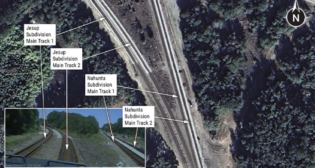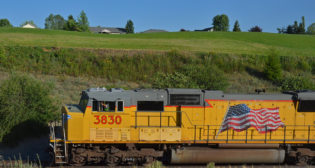
Collaboration for Progress and Growth: Why Trade Associations Matter
Written by Patty Long, President, Railway Supply InstituteAs I read the rail trade press and follow the commentary of industry thought leaders, I keep coming back to a very basic premise. There is no dispute on the path our industry needs to take for continued growth and prosperity. Put simply: service, safety and sustainability will drive more people and products to the railways. Technology will light that path, but I would insist that collaboration is the “secret sauce” needed to get us there.
I am a relative newcomer to the rail industry. With 30 years of experience in the trade association world, however, I’ve witnessed the possibilities that unfold when industries temporarily check their competitive tendencies at the door and work together for progress and growth. Don’t misunderstand me—competition drives innovation and is the hallmark of a strong industry. But there is another opportunity to effect real change and that is participating in your industry trade association.
Business trade associations have existed almost as long as industry. Many were formed in a hurry to address an emerging threat, but they have endured because companies understand that “the whole is always stronger than the parts.” A good trade association can improve business conditions for an entire industry and change an incorrect narrative whether it is being espoused by members of Congress, regulators, the media or the public. Remember “Got Milk?”

As the broader rail industry (railroads and suppliers), we need to recognize that our fates are closely tied. Sure, suppliers need a successful railroad system to prosper, but the railroads need a healthy and thriving supply chain to survive as well.
Freight rail took a direct public perception hit in the wake of East Palestine, and together we need to right that ship. No one disputes the seriousness of what took place on Feb. 3, but too many political interests used the media frenzy to advance agendas that had nothing to do with that event. Together, we need to re-educate the public, the Congress and the regulators about what we do and how we do it safely and successfully.
Supply chain disruptions brought new awareness about the importance of rail to the U.S. economy, but it also shone a bright light on areas for improvement. New technologies—developed by rail suppliers—can improve that service and begin to turn the tide on decreasing modal share.
On the passenger side, Amtrak and the myriad of local transit agencies need a robust and thriving supply chain. Last year, the rail industry was effectively given over a hundred billion dollars by the U.S. taxpayer, much of it dedicated to passenger rail. But the appropriation process means there is a limited time to get that money into the system. As an industry, we need to work together to address issues like procurement and inflation that are stalling investments and driving small suppliers out of the industry.
More narrowly, as the rail supply industry, we need to come together to address issues that are unique to our business. Specifically:
- We need an environment that encourages investment in capital equipment and technologies for the future.
- We need an equitable seat at the table where regulations, car-hire rates, and mandates for rail suppliers are being established.
- We need to address an increasing trend of responsibility and liability being unilaterally transferred to suppliers.
- We need a collective voice that represents the 242,000 people who currently work in the rail supply industry.
This October, Railway Interchange (hosted by RSI and several rail supply associations) will bring the entire industry together for three days of exhibits, technical sessions and thought leadership surrounding collaboration and growth. The RSI education track plans to address timely issues such as creating diverse supply chains, the narrative around human capital vs. technology, partnering with international rail organizations, assistance with trade development, includes dialogues with key legislators and regulators and so much more. I hope you will make plans to attend and join in this important conversation.
More important, I hope that you are taking advantage of the opportunity that your trade associations provide to convene and unite our industry. We know where we need to go. But even the most famous American innovator, Benjamin Franklin, understood that “we must all hang together, or most assuredly, we shall all hang separately”.
See you in Indy!



